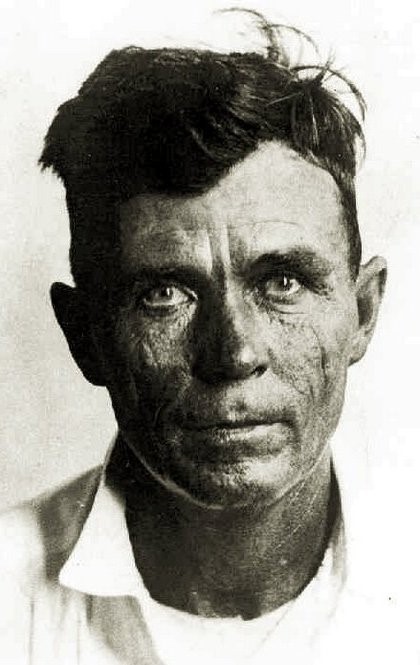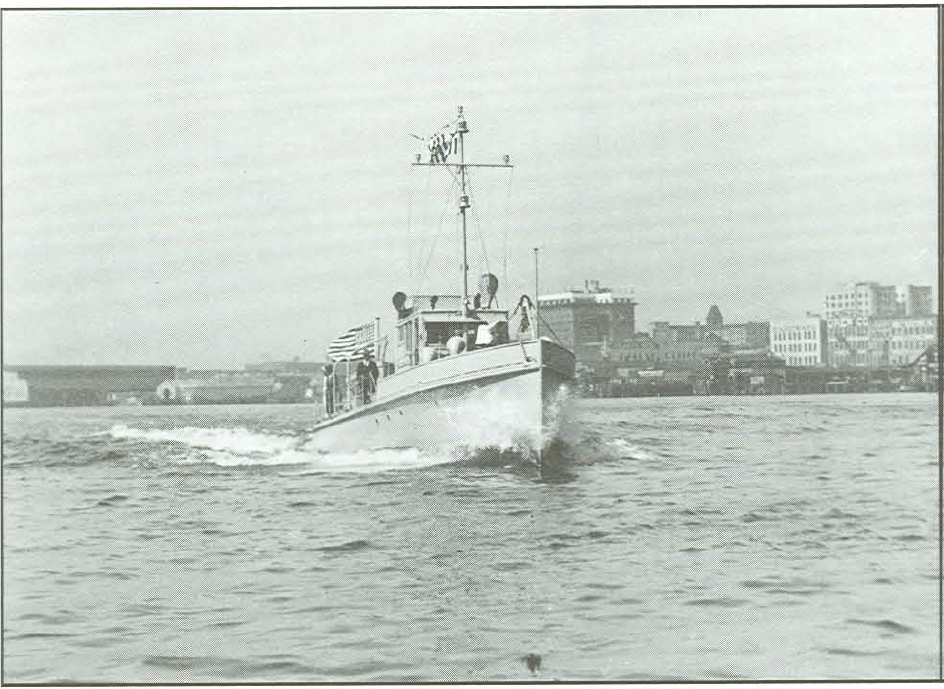The ‘Gulf Stream Pirate’ – Rumrunning leads to shooting in Prohibition Era
Rumrunner James Alderman hanged in Florida after shooting two Coast Guardsman dead in 1926

The Prohibition Era is at times characterized by the speakeasy, with men in suits and women in gowns drinking free-flowing liquor accompanied by a jazz soundtrack. The liquor was delivered by pug-faced, stocky gangsters with long topcoats, brandishing machine guns.

But along the coasts, there was another character that often gets overlooked, the pirate. Not quite the swashbuckling stereotype of centuries gone by, but Robin Hood-type figures who combined expert seamanship with a knack for outrunning law enforcement.
From Bill McCoy, whose exploits off the New Jersey coast made him a legend to in rum-running community, to E.W. “Red” Shannon, who died in a hail of bullets as his boat pulled up to a marina outside the Flamingo Hotel on Miami Beach, these smugglers were the epitome of the high-seas adventurer, an image that was repeated to some degree during the infamous “cocaine cowboys” era of 1980s Miami.
In fact, South Florida was a hotbed of illicit liquor smuggling during Prohibition, reaching its zenith in the mid-1920s. Load after load of rum, whiskey and other spirits were coming in on boats from the Bahamas, while boats coming up from Cuba were bringing not only rum, but illegal aliens, and, in some cases, drugs.
One of the leading rumrunners in South Florida at that time was James Horace Alderman, known as the “Gulf Stream Pirate.” Alderman was born outside Tampa but grew up in the dense mangrove forests and byzantine waterways of the Ten Thousands Islands, off Florida’s southwest coast. During Prohibition he made a name for himself as a top smuggler, using super-fast boats outfitted with high-horsepower engines that could often outrun the U.S. Coast Guard.
Clashes between the Coast Guard and rumrunners in South Florida were becoming increasingly common. But while the Guard was there to enforce the federal ban on alcohol imports, many in the community supported the rumrunners. That included local politicians and even law enforcement, some of whom were in cahoots with the liquor smugglers. Relationships between the local community and the Coast Guard were strained at best. And one fateful incident involving Alderman brought that to a head.
On August 7, 1926, Alderman and an associate, Robert Weech, were heading back to Miami with a load of booze they picked up in Bimini. A Coast Guard vessel with seven crew men and a Secret Service agent aboard came upon Alderman and shot across his bow, ordering the rumrunner to stop. The Coast Guard boarded Alderman’s vessel and brought him, Weech and the liquor back aboard the Coast Guard vessel. What happened next is unclear. The Coast Guard asserted that Alderman smuggled a gun on board the Coast Guard vessel and started shooting.
Alderman said he picked the gun up off a table in the pilot’s house and shot in self-defense. When another Coast Guard vessel came upon the scene, they found that Secret Service agent Robert Webster and Boatswain Sidney C. Sanderlin were dead. A motor machinist, Victor A. Lamby, was injured and later died from the injuries. Seaman Second Class Jodie L. Hollingsworth was shot in the eye (he survived).

Alderman and Weech, who had been set upon by the remaining men on the ship, were badly beaten. They were transported ashore to a jail in Broward County, then transferred to Jacksonville after threats to storm the jail were called in to the police station. Alderman was charged with first-degree murder. Weech decided to hedge his bets and made a deal with the Coast Guard to testify against Alderman.
Alderman was put on trial in January 1928. He was convicted of three counts of murder as well as piracy. Over the next year, his lawyer began the process of appealing the conviction. Alderman converted to Christianity and started holding regular prayer meetings in prison. He even wrote his life story and the tale of his conversion and new life as a changed man. Petitions for his commutation came from 11 of the 12 jurors who convicted him, as well as the judge who initially sentenced Alderman to death. The U.S. Supreme Court refused to reverse the decision. Appeals were even made to President Herbert Hoover, but to no avail.
Alderman was set to be executed at Coast Guard Base Six, now site of the Bahia Mar marina on Seabreeze Boulevard in Ft. Lauderdale, in secret. However, a local reporter snuck in disguised as an undertaker’s assistant. When the bottom dropped in the makeshift gallows and Alderman dropped into the noose, the reporter later wrote how Alderman’s neck didn’t break. Instead, he struggled for 12 minutes before finally dying. On August 7, 1929, at 6:19 a.m., James Horace Alderman became the only person ever hanged by the U.S. Coast Guard.
Scott M. Deitche is the author of six books on organized crime, including a biography of Santo Trafficante Jr., and has written dozens of articles on organized crime for magazines and newspapers. He has been featured on the History Channel, A&E, Discovery Channel, AHC, Oxygen Network and many local and national news shows. He is currently working on his seventh book, “The Jersey Mob.”
Feedback or questions? Email blog@themobmuseum.org





